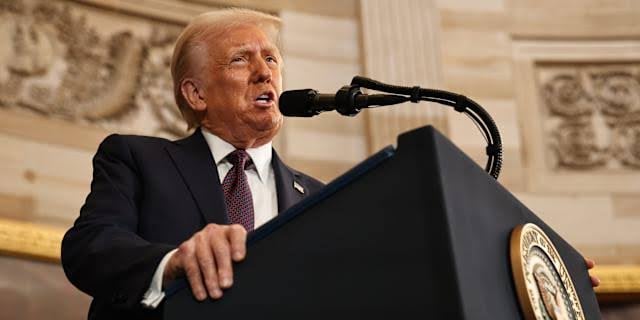Trump Raises Tariffs on India to Punitive 50%

Donald Trump has followed through on his warning to double tariffs on Indian imports, raising the rate to 50% just weeks after setting a 25% baseline levy.
The move puts India, the world’s fifth-largest economy, into one of the highest tariff brackets in US trade policy and adds fresh strain to an already fragile global environment. Washington’s decision is framed as a penalty for India’s purchases of Russian oil, a policy Trump says undermines efforts to isolate Moscow.
But the burden is increasingly felt at home, with American businesses and consumers facing steeper costs, while labor market indicators point to weakening momentum. Inflationary pressures risk intensifying further as India supplies goods at the heart of US consumer demand.
The trade imbalance underscores what is at stake. The US imported $87 billion in goods from India last year while exporting just $42 billion, leaving a deficit that has widened over the decade. Key imports include pharmaceuticals, apparel, and communications equipment, while energy, chemicals, and aerospace parts dominate American exports.
What Does This Mean for Me?
New Delhi has signaled it is prepared to retaliate, raising the risk of tit-for-tat duties that could hit US oil and gas exports, an industry already facing volatility. Comparisons with China are unavoidable: Beijing remains the largest buyer of Russian oil, yet its tariffs sit at 30%.
With Trump threatening broader hikes against other nations trading with Moscow, global markets face another potential round of tariff shocks just as growth forecasts remain subdued and interest rates hover near restrictive levels.
More News
.webp)
Japan’s Rate Shift Is Rippling Through Global Bond Markets

China’s Growth Engine Stalls as Consumers and Investors Pull Back

Egypt’s Recovery Gains Traction as Household Pressure Lingers

OECD Warns AI and Tariffs Will Test the Global Economy

Zero Tariffs, Higher Drug Bills as US and UK Reset Pharma Trade

Catastrophe Bonds Go Global as Climate Risk Meets Yield Hunting
.webp)
Canada Shields Steel and Lumber Industries From Tariffs
